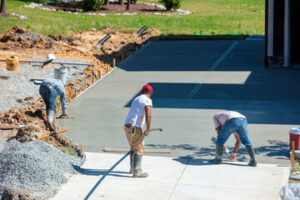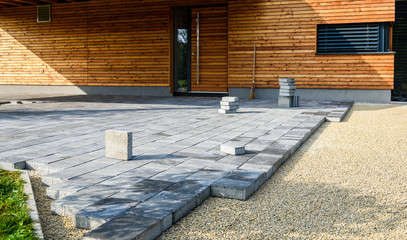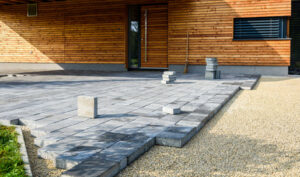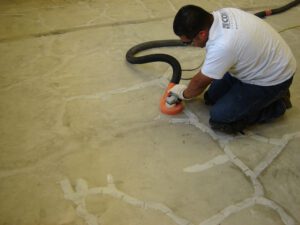A good concrete contractor can do many things, such as repair cracked concrete. They know how to work efficiently and on schedule to complete your project on time. Concrete Contractors Dallas TX can also help you create an interesting look for your home or business with stamped concrete. These professionals also work with suppliers to ensure they can deliver the concrete you need for your project. If you like to use your hands and see the fruits of your labor, a career as a concrete contractor may be the right fit for you. You can work on a variety of different projects and help create something unique for every client.
 The concrete industry is in high demand because there is a labor shortage to fill the positions needed to complete construction projects. Many large projects, such as the HS2 rail project in the United Kingdom, require massive amounts of concrete to be poured and cured.
The concrete industry is in high demand because there is a labor shortage to fill the positions needed to complete construction projects. Many large projects, such as the HS2 rail project in the United Kingdom, require massive amounts of concrete to be poured and cured.
Fortunately, there are several ways to learn the skills and expertise that are needed to become a concrete contractor. One option is to enter into an apprenticeship program with a trade union. The apprenticeship process includes instruction and 5,000 hours of paid on-the-job training. This allows you to earn a strong base salary while you learn the ropes. Then, you can move up the ranks from laborer to foreman or superintendent based on your ability and experience.
Concrete Contractors are some of the highest paid professionals in construction. They make strong base salaries and can easily earn additional money from incentives for travel or overtime.
They also don’t have to worry about paying for a college degree, which can be an important factor in their high pay. Some contractors even receive apprenticeships that pay for on-the-job training.
If you enjoy working with your hands, a career as a concrete contractor could be the perfect fit for you. You get to help build something from scratch and see the fruits of your labor.
Concrete contractors have a lot of experience with this type of work, so they know how to address problems that could occur in the construction phase. They can shave much time off projects by engaging them early and correcting issues they recognize before the design process starts.
Concrete is a crucial building material for both residential and commercial spaces. The global concrete market is estimated to be over $395 billion, making it a lucrative industry.
Choosing a concrete contractor with a good reputation in the industry is important. This will ensure that your project is completed successfully.
A reputable concrete contractor will be able to provide references and reviews from past clients. They may also have a portfolio of their work available online, which can be a great way to determine their abilities and quality.
A seasoned concrete contractor will have years of experience and will have the necessary skills to complete your job effectively. They will also be able to provide insight into the technical aspects of their work, and will be able to suggest additional options that will help you get the most out of your concrete project.
Concrete contractors have the right equipment to handle various concrete jobs. This includes concrete foundations, stamped concrete, precast and mixed concrete, block walls, and concrete slabs.
Aside from this, they also have a vast knowledge on different concrete products and how to use them accordingly. This is important because it helps them accomplish the work to their satisfaction and avoid any problems along the way.
It is a good idea to hire only experienced concrete contractors who have been in this field for a long time. Newbies may not know what they are doing and can cause more harm than help in your project.
They also need to be fully updated on the newest construction management technology and construction project management concepts. This helps them manage their team efficiently so that they can complete the project on time.
oncrete contractors specialize in installing, repairing, and maintaining concrete structures. They work with a variety of clients, including homeowners, commercial property owners, and government agencies, to complete various concrete projects.
Concrete contractors may work on projects such as pouring new concrete foundations, sidewalks, driveways, parking lots, curbs, retaining walls, and decorative concrete finishes. They also repair and maintain existing concrete structures by fixing cracks, resurfacing concrete, and applying protective coatings.
Concrete contractors are typically skilled in using various tools and equipment, including concrete mixers, saws, drills, and other hand and power tools. They are knowledgeable in mixing and pouring concrete, ensuring proper curing and finishing techniques, and applying coatings and sealants to protect the concrete from environmental factors.


 As you can see, a driveway that has been properly maintained and cared for will last you for many years to come.
As you can see, a driveway that has been properly maintained and cared for will last you for many years to come. 
